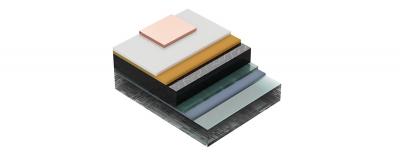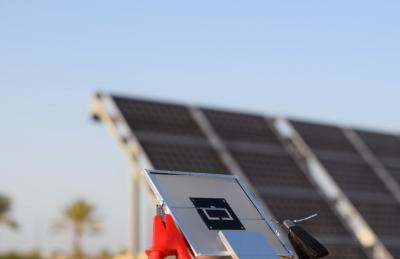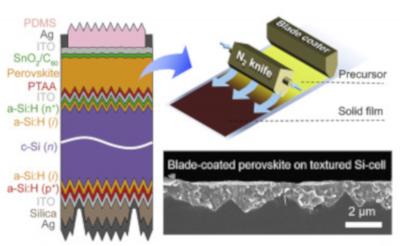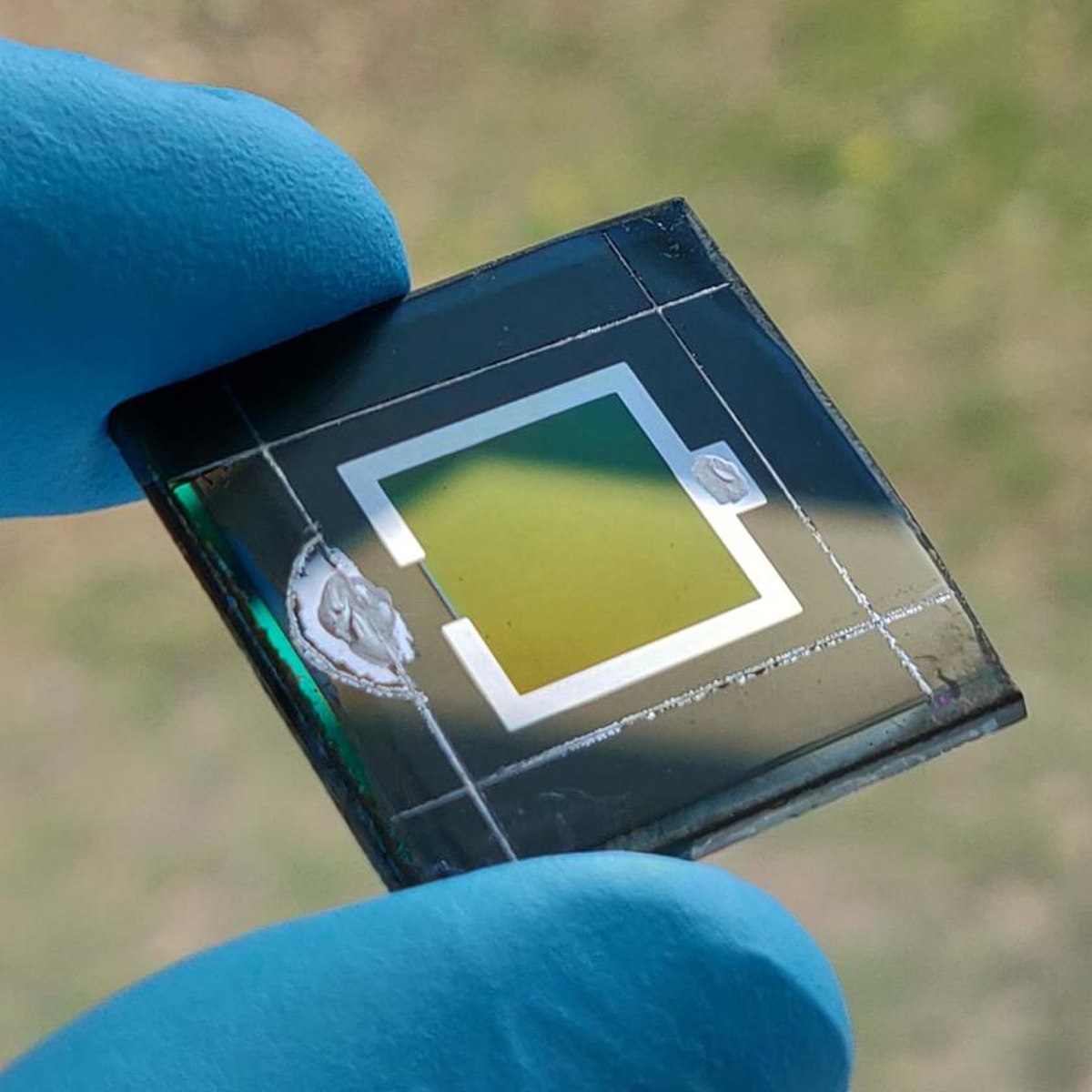New perovskite ink could open the door to mass production of perovskite solar cells
KAUST researchers have developed a perovskite ink tailor-made for a mass manufacturing process called slot-die coating, producing PSCs that captured solar energy with high efficiency. The ink could also be coated onto silicon to create perovskite/silicon tandem solar cells.
 The planar p-i-n device architecture of the perovskite solar cell employed in the study. Image credit: KAUST
The planar p-i-n device architecture of the perovskite solar cell employed in the study. Image credit: KAUST
PSCs made in research labs are typically made by spin-coating, which is unsuited to mass manufacture. Slot-die coating, in contrast, is a manufacturing technique used industrially for many years. 'The process involves continuously and precisely forcing an ink through a narrow slit that is moved across the substrate to form a continuous film,' Anand Subbiah, a postdoc in Stefaan De Wolf's lab, said. 'This high-throughput technique would allow for roll-to-roll fabrication, similar to printing newspapers.'








